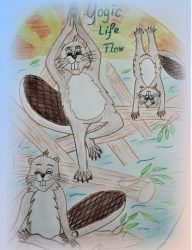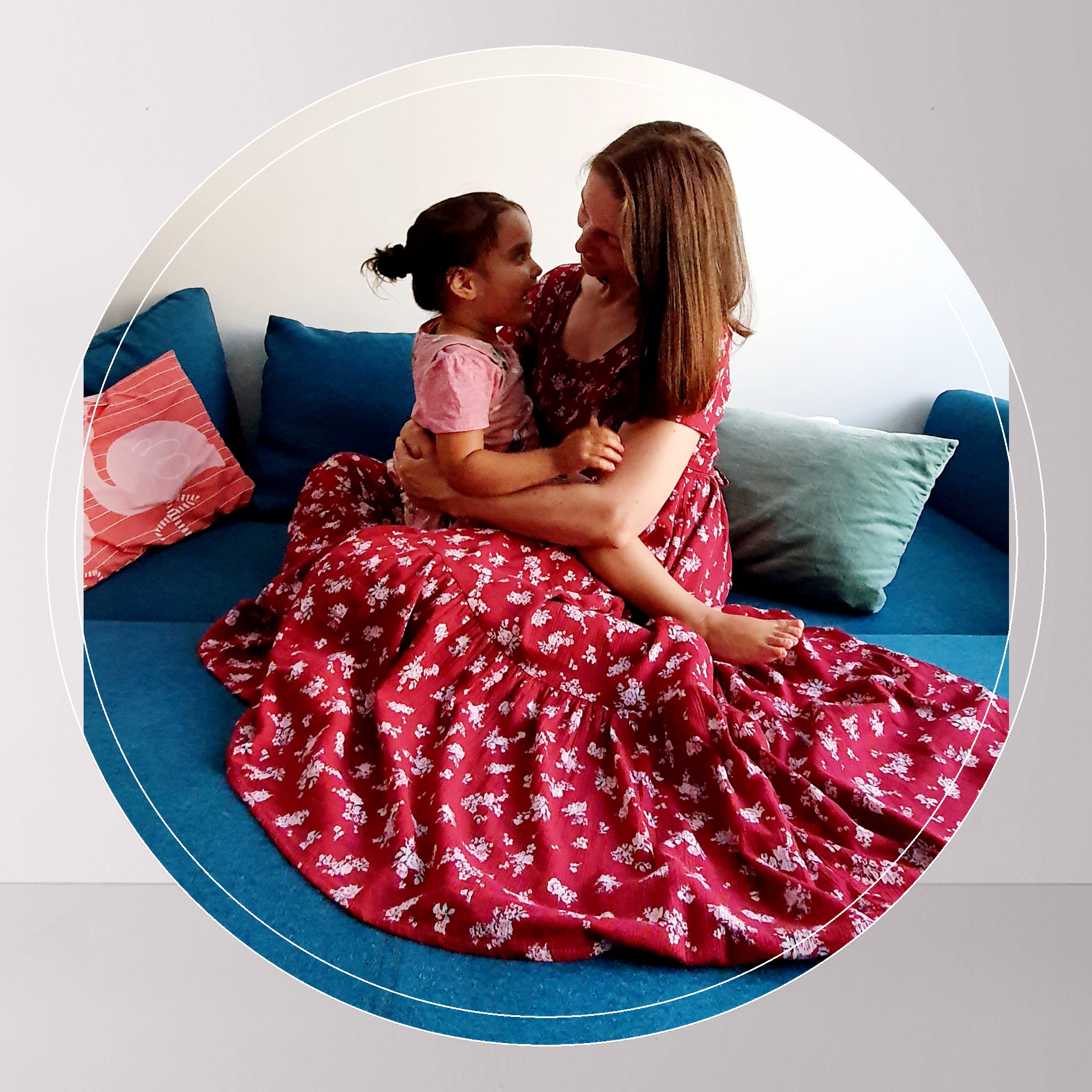Parenting and the Path of Yoga
As parents we have to find our very own way of parenting, it doesn’t matter which cultural and social backgrounds we have. Yoga can be a great partner in doing that since it offers us the ability to be ourselves and unfold. At the same time it gives us the chance to use tools which help us to support and accompany our children in their development and growing towards a selfconfident and mindful citizen of this world. With the help of Yoga and it’s approach of life we can support the development of social skills, positive sense of self, adequate ability of self-control, trust in own self-efficacy, adequate way of dealing with stress and the ability to solve problems. These are parameter to promote the development of resilience in childhood. Resilience is the ability of a person to recover quickly from difficulties and grow on them, which is of fundamental importance on the journey of life long learning. Through the approach of Yoga we can teach children how to be there very selves without a overwhelming need for social approval. Moreover we can communicate to our children how to be kind and careing to oneselfe and others. Parenting goes very well with the daily practice of Yoga. We just have to remind us that the Yoga routine in and with the family will be different each day. But this helps us to practice awareness and do Yoga according time, place, circumstances and individual needs. It trains us not only to be flexible but also how to practice in a natural way, free of any entitlement of perfection. Furtheremore Yoga is as well of big value when it comes to the point of activating resources which give support in parenting life.
Pranayama, the yogic way of breathing to connect body and mind, is one unique tool which helps to be more balanced, if there is a regular practice. As well it helps in stressful situations to find the balance again. It is even a wonderful tool which can be handed over to the child. To learn children how to come to breath awareness, especially in stressful moments, is a helpful gift for their childhood as well as for their further lives as adults. How to take a deep breath and be aware of own feelings, younger children can learn easily through games as well as if parents name the feelings and emotions in the moment of happening like “I can see you are feeling angry/sad/afraid etc.” Here parents can show options of how to use breath in a simple and playful way to feel better. For example “Blow the leave from my hand as if it would carry away your sadness” or “Blow the anger away with three times repeating the HA-Sound.” A useful tool in helping your child to be at balance or come back to it is to practice the AUM-Sound, regularly in relaxed and joyful situations as well as in distressed once. Bhramari or the Buzzing-Bee Pranayama, is another joyfull practice for children to offer. Even infants can be sometimes heard to do a buzzing sound while falling asleep. So it is actually a nature given calming sound. Thus Pranayama gives us parents the ability to try diffrent ways to guide our children through discomforts. Furthermore we should use Pranayama for us as well.
How the above mentioned breathing methods are done:
The HA-Breathing
Here the child breathes in through the nose and out through the mouth. With the exhalation the sound HA is done. Usually it is done in standing position. The arms are moved, sideways of the body, above the head while inhalation and downwards, aside the body, while exhalation. During exhalation one can even bend forwards and downwards to intensive the exercise.
The AUM-Breathing Pranayama
Here the child breathes in through the nose and out through the mouth. While breathing out through the mouth the AUM-Sound is done. One can do it while standing, sitting or even lying. In the standing position one can use the arms as well. During inhalation the arms are raised, sideways of the body, above the head. During exhalation the arms are lowered sideways as well.
Bhramari/The Buzzing-Bee Pranayama
Usually it is done in sitting position but it can be done even in standing position. The child breathes in and out through the nose, the mouth is closed. While exhaling the Buzzing-Bee-Sound is done. Children don’t need to do the mudra for it. Whereat you close your ears by gently pressing the cartilages with your thumbs while you are placeing the index fingers above the eyebrows as well as the ring and middle fingers on your closed eyes and the little fingers in a way that they are touching the alar wings of the nose. Instead the child can leave this symbolic gesture of the hands and fingers. To hear the sound stronger, the child can place the palms on the ears. Elder children, of course, can do the mudra as well.
Asanas/The yogic exercises are most important for staying bodily and mentaly healthy. Physical activities like Asanas are not only helping to stay flexible and well in motion, they are prime for all kind of bodily functions in humans. Moreover Asanas are helping to release muscle tensions and blockages caused by physical strain or stress. Especially the conscious breathing in combination with the physical activity is here the key of regaining wellbeing. Furtheremore Asanas relieve stress and help to come to a mind body relaxation. For children and there physical, mental, emotional as well as cognitive development physical activities are essential. Asanas are wonderful physical activities which can be offered to children since they have a very playful character which is most refreshing and attractive for children. Movement is very important for all family members, no matter which age. Therefore Asanas can be a good pillar of the Family-Health-Care.
To center oneselfe as a parent is basic as well. Here selfcare is the key through which personal resources of the parent can be activated. Children need their parents all the time and it is life’s nature that as a human being one is not every day in best condition. Sometimes it’s not the best own day, things don’t work out, one is not satisfied with oneselfe or one is tired and unwell. So to take time for a daily Yoga practice is important to reconnect with oneselfe and nurture one’s own mind-body connection. “Appreciate the beauty of your ‘Inner Self’ and practice self care in a wholistic way by considering body, mind and soul!” This will help you to be more centered and balanced which will create a warm and understanding environment for your children, where they can feel at peace as well as emotionally and mentally nourished. Wherefrom they are ready to explore the world and conquer difficulties which might pop up on their ways. By this means you can “give to” and “teach to your child by example” at the same time. You are showing how to care for oneself as well as giving tools for how to reload with strength, zest for action and happiness.
Yoga brings awareness into your life. Connecting with breath and body while doing asanas, pranayama and meditation allows one to slow down and just be (in the moment) while the mind is calm. One feels at peace and can focus the positive and sensefull. It is important to draw this awareness into other areas of life. So even if it is one of these chaotic days one can see the individual situations in a clearer light and can act accordingly adequate. The ability to be/dive into the present moment can be seen in children. They are happily going on with whatever they are doing in the present moment. They are engaging with life in a very natural, unladen, fresh and spontaneous way, which is one yogic aspect that we can learn from our children. On other hand we can help them to expand there awareness through Yoga so that they are able to understand and solve situations where discomforts popp up.
So take the hand of your child and go together for a walk on the Yoga Path! It will be a joyfull and exciting way of learning! AUM

